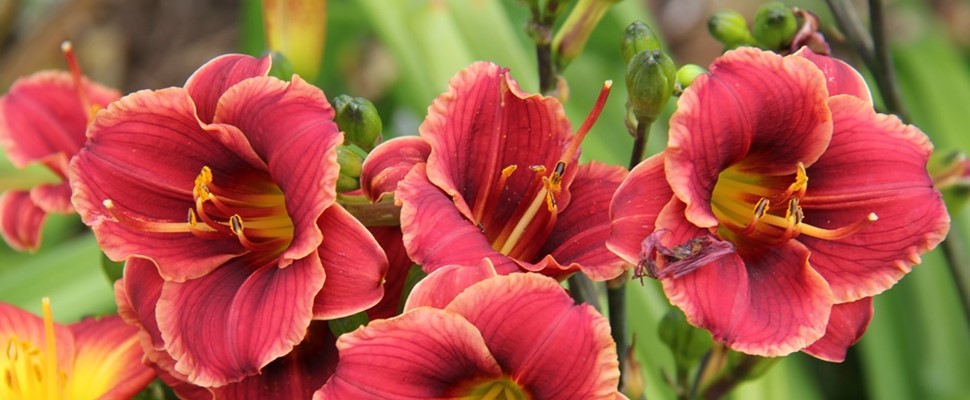
Plant breeding programmes
Breeding the best plants for Auckland
We target our plant breeding to answer specific horticultural questions or challenges that home gardeners face. For example, where a plant disease devastates a group of plants, we would look to breed resistance to the disease in new plants.
Our research informs our 'Plants for Auckland' advice series, available on our website.
Hebe breeding
Jack Hobbs initiated a Hebe breeding programme at the Gardens in 1982. His aim was to produce new varieties of Hebe with superior appearance and garden performance, that were resistant to powdery mildew, and that would do well in Auckland’s climate. His focus was on bright floral colour which was obtained mainly from forms and hybrids of Hebe speciosa, H. macrocarpa var. latisepala. This lead to the development of the Wiri series such as ‘Wiri Joy’, ‘Wiri Splash’, ‘Wiri Jewel’, ‘Wiri Image’ ‘Wiri Gem’ and ‘Wiri Charm’. A complete report of this breeding programme can be found in the Gardens Library.
Camellia breeding
Camellia petal blight has been a significant issue for many plant cultivars all over the world and it was accidentally introduced in the 1990’s to New Zealand. It specifically infects the blooms of many ornamental Camellia species causing them to turn brown and fall early. The fungus Ciborinia camelliae is the causal agent of “Camellia petal blight”.
Some recent research by Matt Denton-Giles (Massey University) identified several species Camellias in our collection which are petal-blight resistant (see Denton-Giles et al., 2013). Following Matt’s findings, we wanted to breed a pretty, petal blight-resistant camellia. Breeding commenced in 2014 with little success – but we were excited by the news that the Auckland Branch of the Camellia Society and the Friends of the Auckland Botanic Gardens had established a fund for Camellia research and development. With the new Neville Haydon Award supporting the breeding project, we are able to work with students to carry out the breeding. University of Auckland students Jess Ryder and Keely Paler, and MIT student Matthew Savage have all been involved with this project to date to help us increase the number of hand pollinated crosses we can achieve this flowering season. Read more about this project here.
Watch our video with Emma Bodley on Camellia breeding:
Hemerocallis breeding
Hemerocallis, (or daylilies) are an early to late summer flowering perennial and are popular garden plants. However, they suffer from severe rust, Puccinia hemerocallidis, which is caused by a fungus that spreads rapidly and causes yellow pustules on the underside of the leaves, and then spreads over the entire leaves.
Daylily rust is spread through spores and these require relatively warm temperatures and high humidity – which are typical of Auckland conditions. We conducted trials to identify top performing daylilies for Auckland (see our report on the rust trial) and have selected rust resistant cultivars for breeding from these results.
Our aim is to develop a rust resistant, evergreen daylily with attractive foliage and long flowering in a range of colours. Stage 1 of this programme can be viewed in the trial garden, these are seedlings of the initial crosses produced. Stage 2 commenced in 2015 with further crossed conducted but flowering was not prolific and therefore affected the number of crosses intended to be done. Regular assessments of the seedlings are done to filter the rust resistant ones out as well as any that look like their parents. In 2017 selections were made from seedlings to be incorporated into our crosses which will be evaluated over the next year. This breeding is an ongoing project.